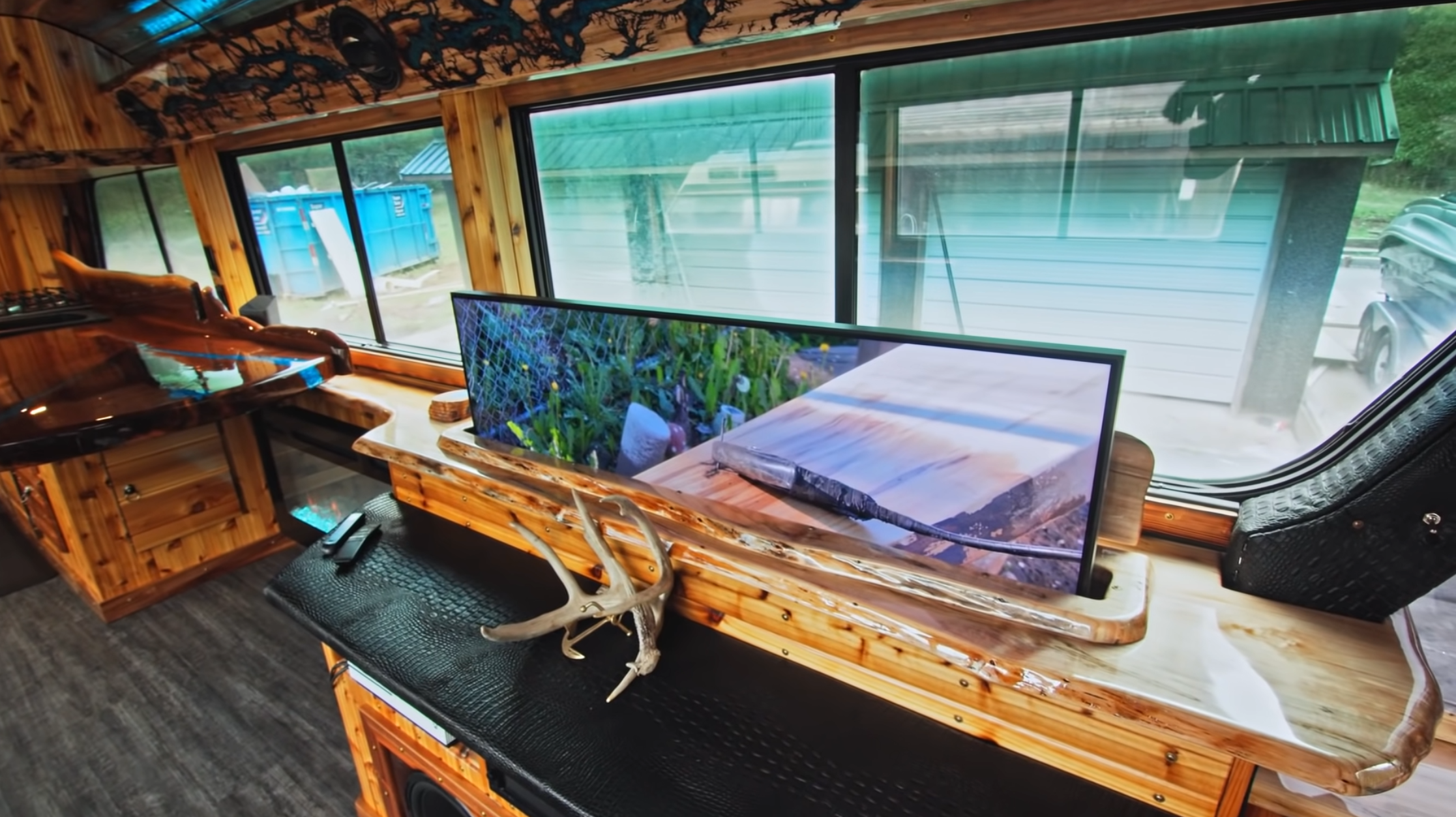I'll be Surprised If You're Not Impressed with This Charter Bus Conversion
Reading time: 4 minutes
Clint Lewing is the proud owner and driver of his home, a 1977 MCI Crusader he has been building up for three years. Five years prior, when filming in Baja, Mexico, he had his first vanlife experience in a rental dodge caravan, cruising through California and loving it so much that he decided to build his own. For a start, he converted a 1991 Chevy G20 for two years and his vanlife went so well he decided to go bigger.
Clint had been looking for this specific bus for around a year and a half and eventually got it for $86K, which included a 7500KW diesel generator plus a 5000 inverter, items that would have been added up to cost just as much. With no previous carpenter experience and without even watching one single Youtube tutorial, Clint converted the bus all on hiw own. He just picked up a tool and tried. In the last year of building the bus out he started to live inside it, getting more and more ideas and going crazy on the details, as he put it.
The old charter bus has 197 000 kilometers, 545 liters of diesel – not a cheap affair to fill it up but it goes a long way. Clint installed two new batteries that help him start and stop the bus. There is another 7500KW quiet diesel generator and an inverter. The generator is plumbed into the fuel tank in order charge Clints battery bank that lies on the other side of the bus. There are more storage compartments that Clint is still planning on building out: one for tools and another for adventure gear. At the back of the bus is a Detroit Diesel 8V71 engine, which Clint says runs great as he installed brand new radiators. On the other side of the bus, Clint stores his propane tanks and (many) more batteries. There are ten 13-inch deep cycle batteries which get charged either by the generator or by his Noco Genius Pro 50 AMP charger, which allow him to have the AC or heater on. There is no need to charge them for around ten months of the year.
The bus is an automatic which makes driving for Clint very comfortable. The first thing he introduces us to is his incredible sound system. But the entertainment doesn't stop here: There is an 8K, 55 inch TV that slides out of the window sill! Underneath it is an electric fireplace that warms up the space in winter, even in BC, Canada. The whole entertainment unit is being powered by the inverter.
All the wood inside has been worked with a wood grain enhancement stain, which makes the natural color of the wood stand out. Clint did everything on his own, even the epoxy on the wood around the whole bus. The only thing he payed someone to do was spraying his roof with spray insulation. His big table/countertop is made out of black walnut. A small fridge is well hidden behind a closet and runs off propane, 110 or 12V. It was the one inside Clint's previous van and is full of stickers from his travels.
The bus owner's favorite piece of the bus is the sliding door he made to separate sleeping room from kitchen/living room. It is made out of cedar spalted maple burls, with an incredible epoxy that took him three weeks to make.
The bedroom consists of a couch that converts into a queen bed, a desk out of olive and where Clint wants to build a petrified wood sink. In the corner is his tiny bathroom with more beautiful epoxy wood. The plumbing for the toilet already came with the bus, thus there is an excellent black water system. In another corner of the bedroom Clint plans to install a shower. And last but not least: from the bedroom a ladder leads straight out onto the rooftop – made out of wood and with the possibility to put railings, it is perfect for gatherings and even barbecues.
"Money can't buy the feeling that you have living in something that you built yourself. You can live a certain lifestyle, but the appreciation that you have when you put all that time, effort and work, when I have people in here and I see them thoroughly enjoying themselves, this is like a payoff, that's always what I wanted from this bus. What this costed was the time, it was the staying up late day in day out. I wouldn't want people to get into the idea of "when I have 10 or 20.000 dollars I can build this" – paying for it is easy, the hardest thing is buying the van or the bus – pulling the pin and doing it. Buy the van, get a camp stove, throw a mattress in it and you're doing vanlife, it's really that simple.”.







